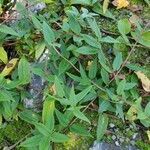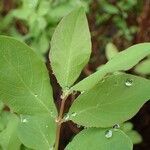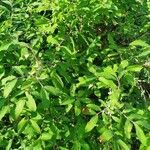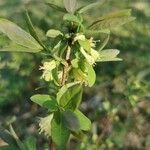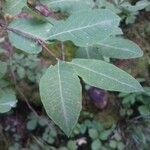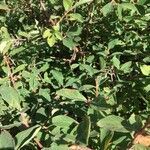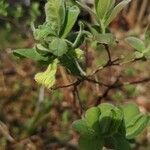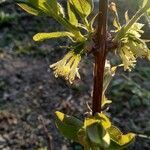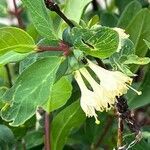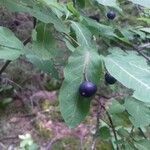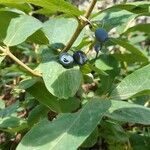Shrub to 1 m, with upright branches, variable in pubescence; lvs oval to oblong, 2–8 cm, usually widest above the middle, obtuse or rounded at the tip, veiny, hairy beneath; peduncles axillary, 3–10 mm; bracts narrow, often much exceeding the ovaries; bractlets wholly concrescent into a cupule closely surrounding and ripening with the ovaries, the cal barely emerging; cor 10–15 mm, yellowish, gibbous at base, the 5 subequal lobes about equaling the tube; style glabrous; fr blue; 2n=18. Swamps and wet woods; ± circumboreal, in Amer. from Lab. to Mack., s. to Pa., Mich., Minn., and Calif. May–July. Ours may be called var. villosa (Michx.) Torr. & A. Gray. (L. villosa)
A deciduous shrub. It grows 1.8-2.4 m high. The crown can be 2 m wide. The branches are thick. The bark is grey-brown and peels in narrow strips. The new leaves can be reddish bronze and have a velvety feel. The leaves are 5-8 cm long. They are narrowly oval. The flowers occur in pairs. They are 12 mm long and yellow. The fruit are deep blue. They are 1 cm long. They develop a whitish bloom when ripe. Lonicera caerulea var. edulis has larger edible fruit. There are several small seeds. They are edible.
